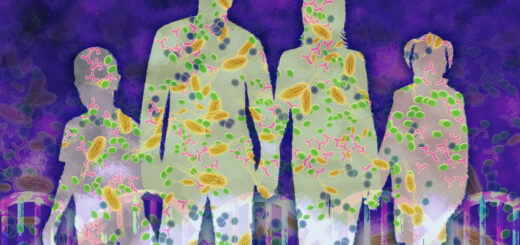Rising from the Dead

The waves of the heart monitor flatten; the doctor sighs, “time of death: 10:23am.” As she exhales her last breath, the blood flow around the body ceases, as does the oxygen supply to all the 7 trillion cells of her body. Starved of oxygen, the cells start to die, one by one, led by the neurons of the brain. At the cellular level, the cells take their own sweet time to cease their existence…the expression of all the genes dwindle and finally stop.
That’s all, right?
Well, not exactly. Many genes actually spring back to life!
A recent study done in animal models has shown that even though the overall gene expression dwindles, some genes that have been dormant since birth suddenly start expressing after the clinical death of the person, for up to 48 hours. When a gene is to be expressed, the DNA is first converted to messenger RNA or mRNA – this is a 3 letter coded string of nucleotide that is then converted to proteins. Hence, the level of mRNA gives you the rate at which that gene is being expressed.
Scientists at the University of Washington measured the level of mRNA of all the genes in dead zebra fish and from liver and brain tissues of dead mice. This was done at a regular interval, after death to up to four days. It was found that the overall mRNA levels after death, the ‘thanatotranscriptome’, had decreased. But 548 genes from zebrafish and 515 from mice showed heightened expression, contrary to the expected results. This suggests that a similar process might also occur in the human body after clinical death. The cells kick start the expression of the genes involved in functions like stress response and inflammation during the final minutes of their life. Surprisingly enough, this also includes the fetal developmental genes which are turned off after birth, and certain candidate genes for the pathogenesis of cancer1.
Scientists speculate that this might be due to the removal of the ‘epigenetic silencing’ of the genes – the chemical tags that turn the genes off. It might also be a physiological response: the cells might use whatever energy left to start the inflammation process to control the damage and heal the body, just as if it were alive2.
Understanding this phenomenon is of particular importance for organ transplantations. The rate of developing cancer in liver transplantation patients is high, which is very uncanny. This might be explained by this new finding. As mentioned earlier, some genes involved in cancer start expressing after death. Hence, there is a possibility that after a donor is clinically dead, the ‘cancer’ genes in their liver are switched on. After transplantation, the recipient may then have a liver whose cells have the activated copies of certain genes which are not to be expressed when alive. Thus, the risk of developing cancer in this transplanted liver increases manifold. The organs, however, could also be screened for the mRNA levels of these genes prior transplantation to reduce the risk of cancer.
The thanatotranscriptome data can also be used in forensics to pinpoint the exact time of death, even by minutes, based on the mRNA levels of these genes. However, a substantial amount of work is to be done to employ this new discovery in forensics and organ transplantation. Nonetheless, this discovery is so very intriguing and opens up new doors into the understanding of cell biology.
Edited by Sarah Spence










